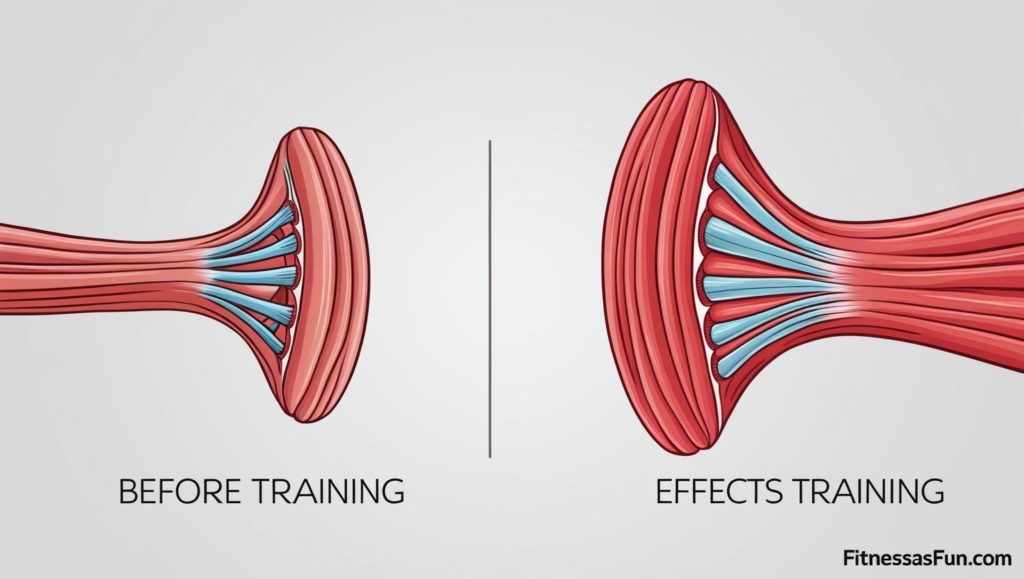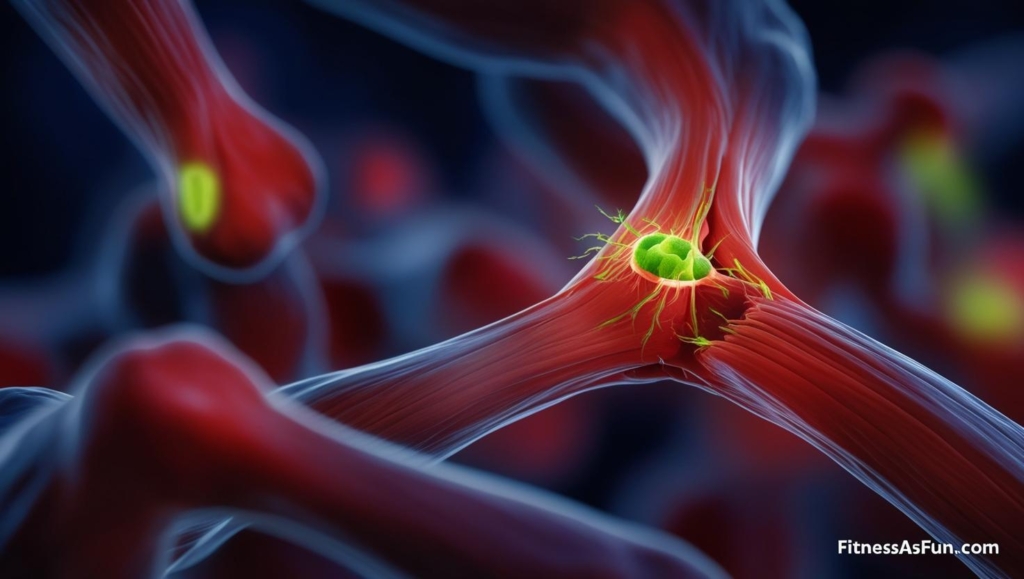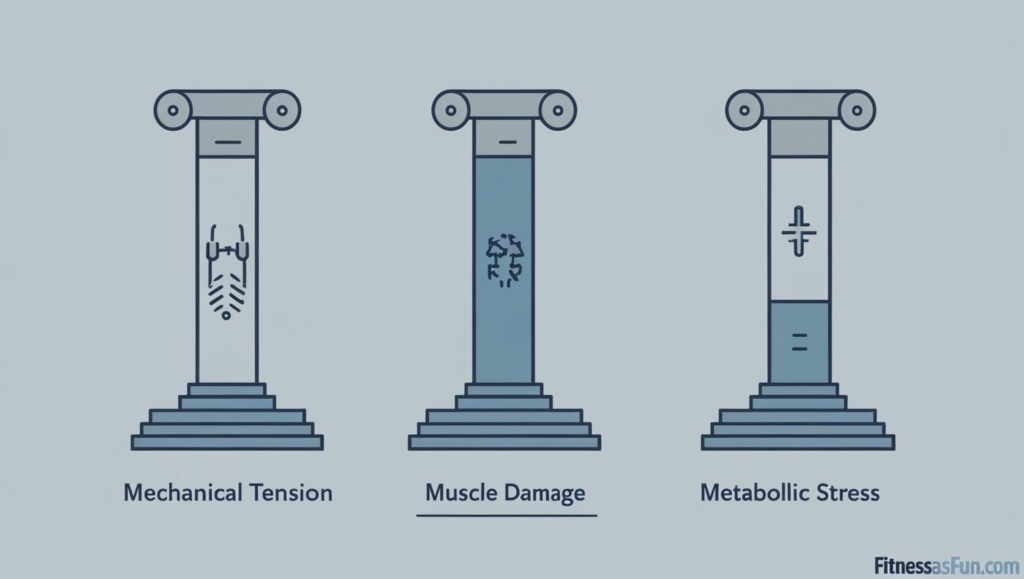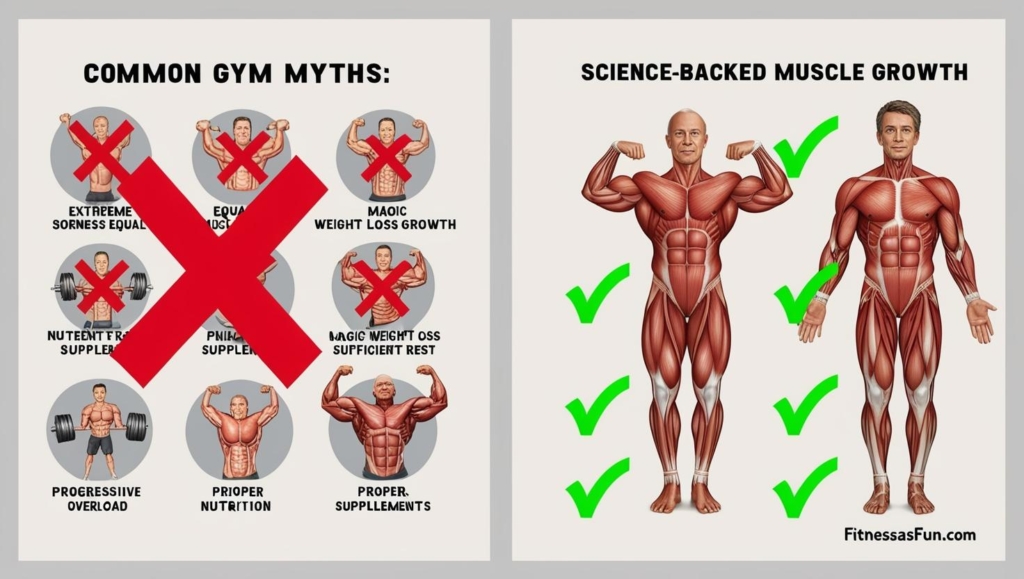Building More Than Just Muscle
You’ve probably heard it a hundred times:
“Lift heavy, eat protein, build muscle.”
But what’s actually happening inside your body when your muscles grow?
Understanding the science behind hypertrophy doesn’t just satisfy curiosity — it can seriously upgrade your training results.
Today, let’s break it down simply, but deeply, so you can train smarter, not just harder.
What is Hypertrophy?

Hypertrophy simply means an increase in the size of cells.
When we talk about muscle hypertrophy, we specifically mean enlarging muscle fibers.
There are two main types of muscle hypertrophy:
- Myofibrillar Hypertrophy
- Growth of the actual contractile parts of the muscle (the “meat” of strength).
- Leads to denser, stronger muscles.
- Triggered by heavy, lower-rep training (think 3–6 reps per set).
- Sarcoplasmic Hypertrophy
- Expansion of the sarcoplasm (the fluid and energy stores around the muscle fibers).
- Leads to bigger, fuller-looking muscles.
- Triggered by higher-rep, volume-focused training (think 8–15+ reps per set).
👉 Pro Tip: Most successful athletes train for both types — not just size or strength alone.
How Does Muscle Growth Actually Happen?

When you lift weights or challenge your muscles, you create tiny microtears in the muscle fibers.
This triggers a cascade of biological processes:
- Muscle Damage
- Microtrauma stimulates repair.
- Inflammatory Response
- Your body sends nutrients, hormones (like testosterone, growth hormone, and IGF-1), and immune cells to the damaged site.
- Protein Synthesis > Protein Breakdown
- The body repairs and reinforces the muscle fibers, making them thicker and stronger.
- When protein synthesis outpaces protein breakdown, muscles grow (source: Schoenfeld, 2010, Journal of Strength and Conditioning Research).
👉 In short:
Train ➔ Damage ➔ Repair ➔ Growth.
The 3 Pillars of Hypertrophy Training

Science highlights three primary mechanisms for maximizing hypertrophy (source: Brad Schoenfeld, 2010):
1. Mechanical Tension
- Lifting heavy weights through a full range of motion.
- Focus on progressive overload — increasing weight, reps, or difficulty over time.
2. Muscle Damage
- Controlled “micro-tears” from eccentric (lengthening) movements.
- Example: The lowering phase of a bicep curl.
3. Metabolic Stress
- The “burn” you feel from high-rep sets.
- Caused by build-up of metabolites like lactate, promoting muscle growth signals.
👉 A great training program uses all three methods for maximum effect.
Important Factors That Influence Muscle Growth

- Nutrition
- You need a caloric surplus and sufficient protein intake (~1.6–2.2g/kg body weight) to fuel muscle repair.
- Recovery
- Muscles grow outside the gym, not inside it.
- Sleep, rest days, and stress management are critical.
- Consistency
- Muscle growth is a long game. Real, sustainable gains often take months or years.
- Genetics
- Everyone can build muscle, but rates and muscle shapes are influenced by genetics.
👉 Don’t chase “instant gains” — chase consistency. That’s where true power lives.
Common Myths About Muscle Growth

🚫 Myth 1: You have to lift extremely heavy all the time.
✔️ Truth: Moderate weights with proper volume and intensity also build serious muscle.
🚫 Myth 2: Muscle turns into fat if you stop training.
✔️ Truth: Muscle and fat are different tissues. If you stop training and eat the same, you might gain fat, but muscle itself doesn’t “turn into” fat.
🚫 Myth 3: More soreness = more growth.
✔️ Truth: Soreness is not a reliable marker for a good workout or hypertrophy.
Final Word: Master the Science, Master Your Results
Building muscle isn’t magic.
It’s biology — and it’s beautiful.
The more you understand why muscles grow, the smarter your training becomes.
Instead of just “working out,” you’ll be sculpting your body with intention, precision, and patience.
Remember:
Muscle growth is earned — one rep, one meal, one recovery day at a time.
Train smart. Stay consistent. Respect the science.
Your strongest, most powerful self is already in the making. 💥
Sources
- Schoenfeld, Brad J., “The Mechanisms of Muscle Hypertrophy and Their Application to Resistance Training,” Journal of Strength and Conditioning Research, 2010.
- Wackerhage H., Schoenfeld BJ., et al., “Stimuli and sensors that initiate skeletal muscle hypertrophy following resistance exercise,” Journal of Applied Physiology, 2019.
- Phillips SM, “A brief review of critical processes in exercise-induced muscular hypertrophy,” Sports Medicine, 2014.





